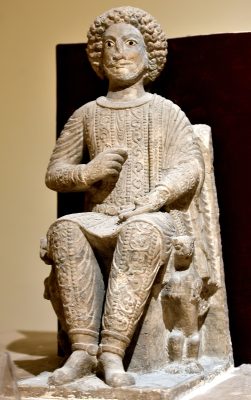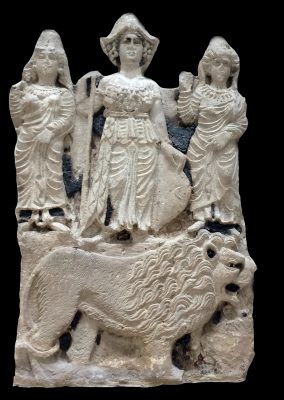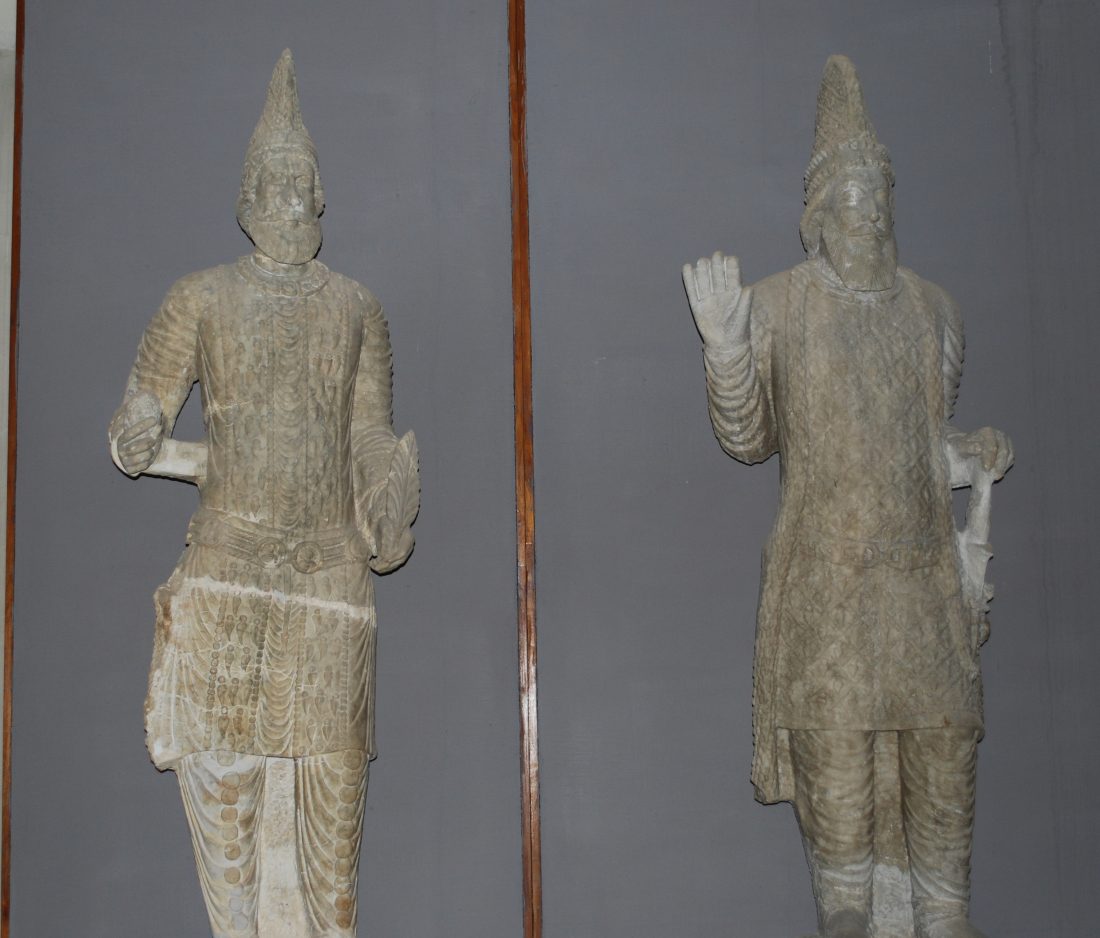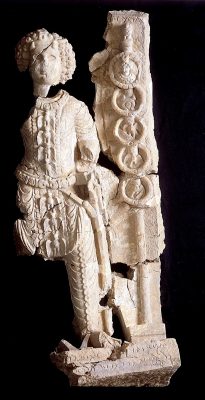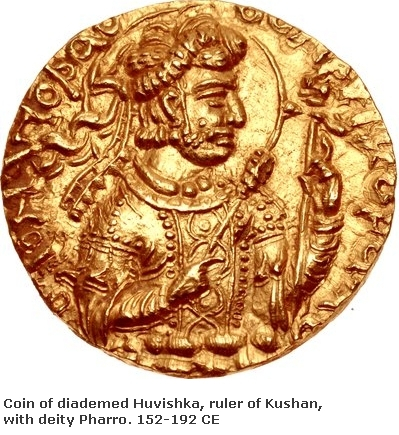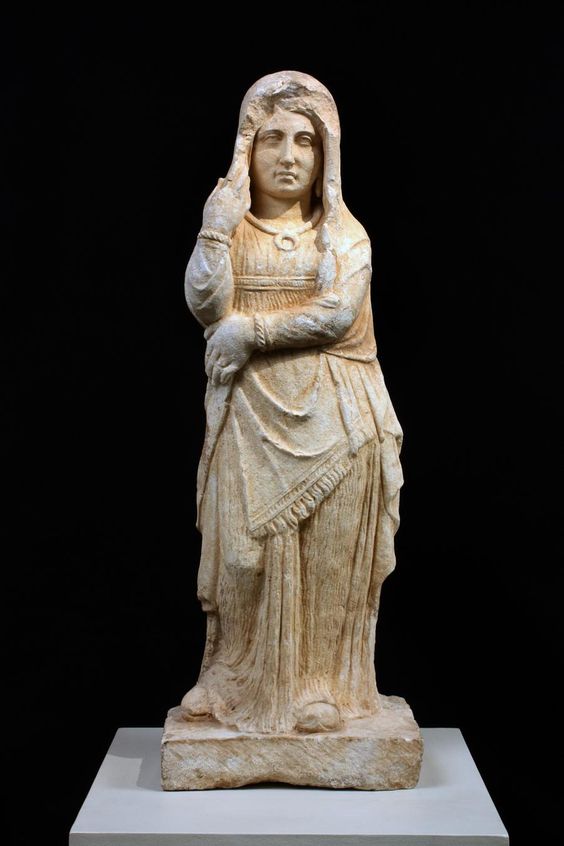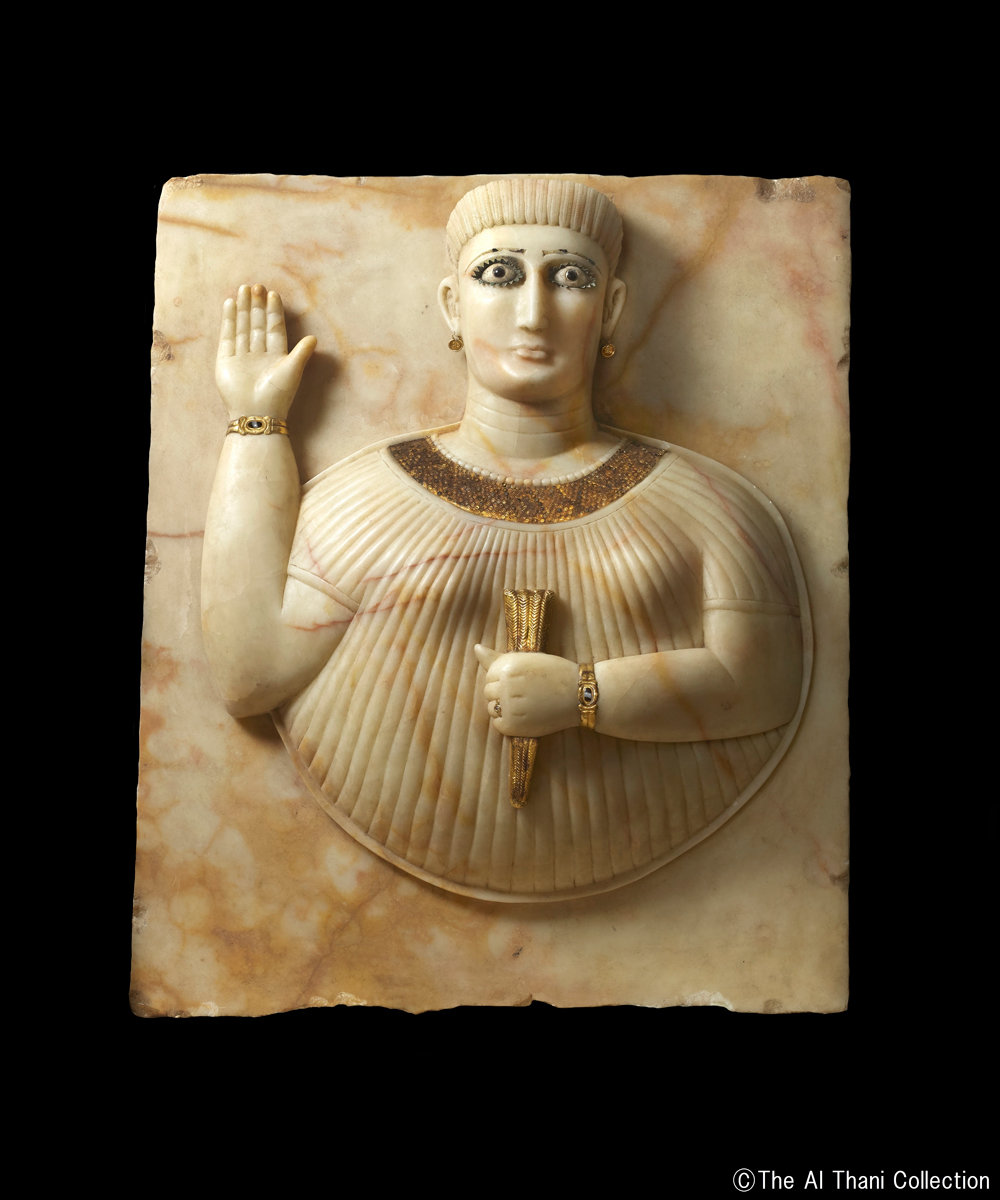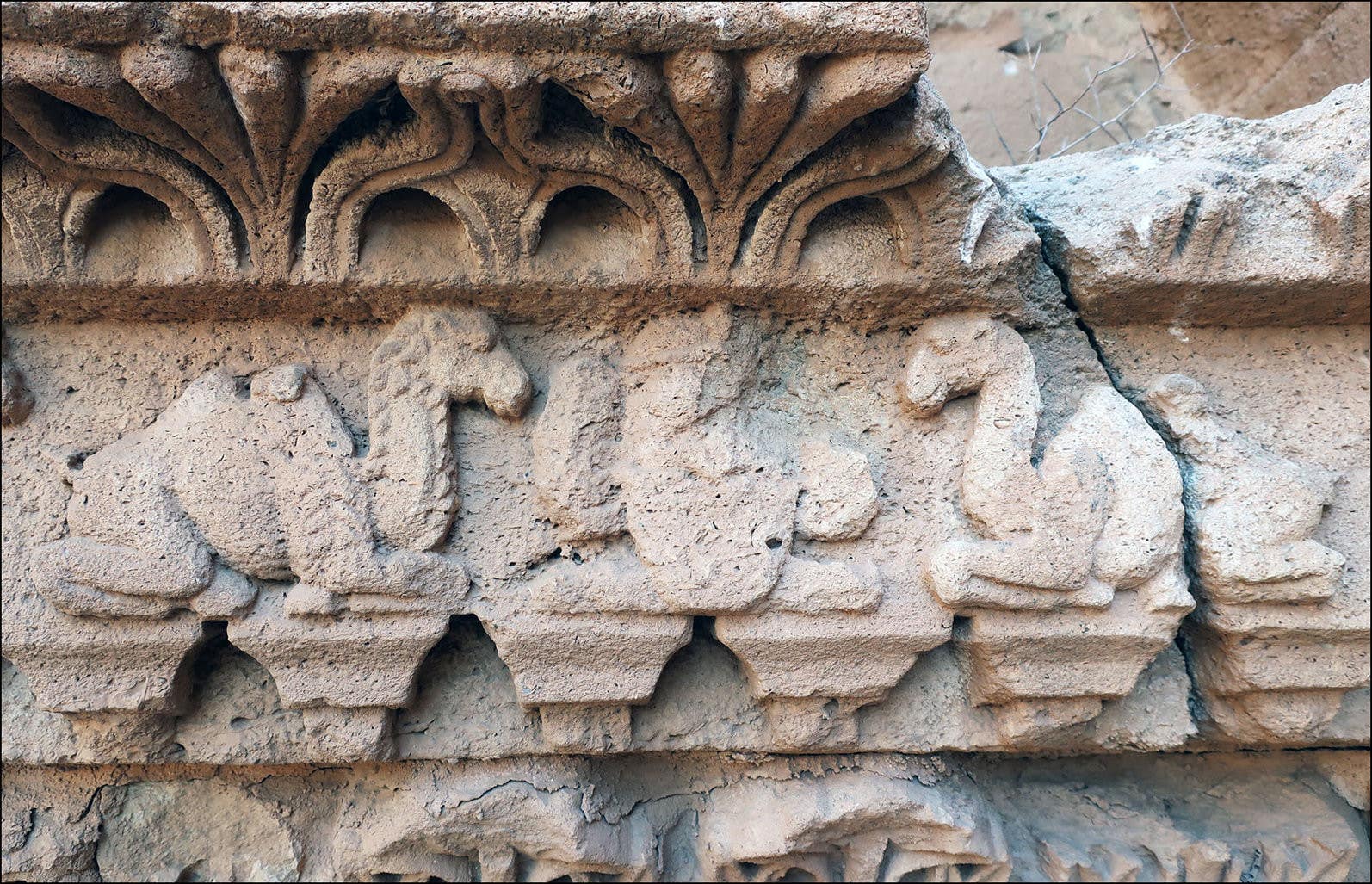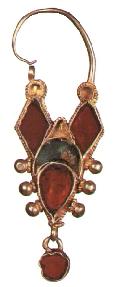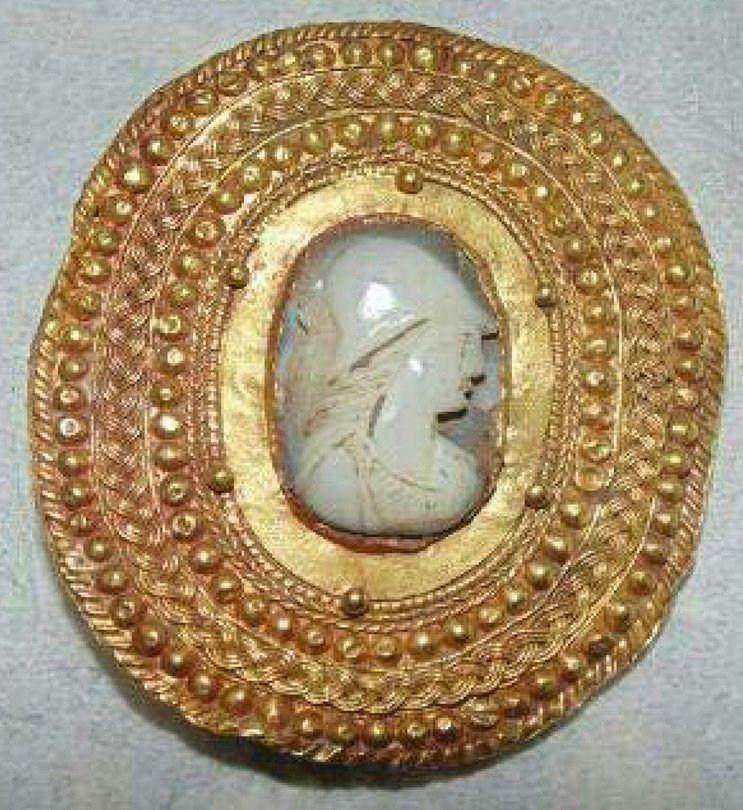- Italian Archaeological Expedition website [https://hatrasite.com/]
- HaSSP Hatra Statuary Salvage Project website [https://camnes.org/hatra-statuary-salvage-project]
Cataloguing and restoration project of the Hatra statuary corpus of the Iraq Museum in Baghdad in cooperation with the State Board of Antiquities and Heritage (SBAH) - Project Mosul https://projectmosul.org/locations/mosul-museum/reconstructions/hatra-king-with-eagle
- Assessing the Damage at the Mosul Museum, Part 2: The Sculptures from Hatra
Gates of Nineveh blog an article MARCH 3, 2015 [https://web.archive.org/]
- The Variety of Local Religious Life in the Near East, In the Hellenistic and Roman Periods; Ted Kaizer https://brill.com/view/title/11896
- Cult Images in Cities of the Syrian-Mesopotamian Desert during the first three centuries CE: Continuity and Change in M. Blomer, A. Lichtenberger, R. Raja (eds), Religious Identities in the Levant from Alexander to Muhammed. Continuity and Change (Brepols 2015), 255-269. Lucinda Dirven https://www.academia.edu
- A note on the inscriptions and architectural decorations from the small temples in Hatra; Krzysztof Jakubiak https://www.academia.edu
- A Statue of the Chief Priest from Hatra WATHIQ AL-SALIHI, 1991 https://www.jstor.org/stable/24048282
- Wall Paintings from Building A at Hatra, VENCO RICCIARDI, R. Iranica, Antiqua 2005
- Heritage in Conflict: Culture and the Battlefield https://g.co/arts/jRAfZf1mfTWwsaEV9?zx=vgh00801do8
- Farrokh, K., Karamian, Gh., Delfan, M., Astaraki, F. (2016). Preliminary reports of the late Parthian or early Sassanian relief at Panj-e Ali, the Parthian relief at Andika and examinations of late Parthian swords and daggers. HISTORIA I ŚWIAT, No.5, pp. 31-55. https://www.academia.edu
- Nanaja – eine ikonographische Studie zur Darstellung einer altorientalischen Göttin in hellenistisch-parthischer Zeit, Claus Ambos https://www.academia.edu
- Daria Jędrzejewska, Hatra. Strategiczne znaczenie miasta i konsekwencje jego upadku. Zeszyty Naukowe Towarzystwa Doktorantów UJ Nauki Społeczne, Numer 25 (2/2019), s. 9–24. DOI: 10.26361/ZNTDSp.10.2019.25.01
Hatra to miasto zbudowane na bazie koła o średnicy około 2 km.”Hatra, której nazwa oznacza święty okręg, była ośrodkiem kultu boga słońca” [Daria Jędrzejewska]
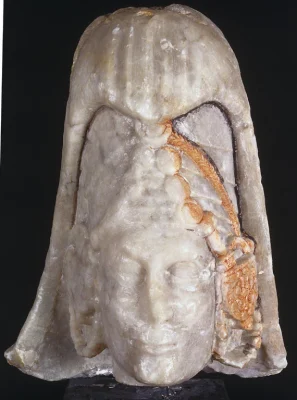


©Eric Bonnier, Italian Archaeological Expedition in Hatra
©Osama Amin >> https://commons.wikimedia.org https://commons.wikimedia.org
Sculpture from Hatra, a woman wearing high headdress decorated with a segment ornament similar to those of Palmyra, a wide chain (or braided leather strap), huge temple pendants & a string of beads. Survived polychrome: black & red (the basis of a gilding perhaps).
2nd-3rd century. The Iraq Museum in Baghdad
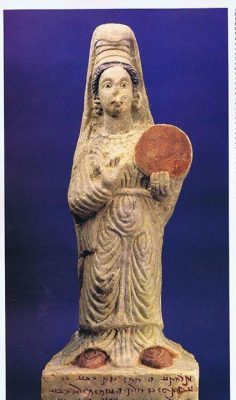

See also:
A Study of Musical Instruments’ Motif in Ancient Iran and Identification of the Music’s Position and Importance in That Era. https://jjhjor.alzahra.ac.ir/article_3586.html?lang=en
Auto-translation from Arabic, text from FB
“Statue (Sami, daughter of Aja), who, as it seems to us, was a musician and singer in the temple, as we find writing on the base of the statue indicating that this is a statue (Sami Bint Aja bin Ishti Ibn Suluk) erected for her by her husband (Aja Ibn Aba Kahan, Tarata). We will not forget The statue of the female musician (Qami bint Abd Somya, the wine seller). A little bit about the usual outfits, and that her statue has a high artistic value in terms of plastic execution. On the base of the statue there is a text that says: (Baylol in the year 549 = 238 AD, a valuable statue of the daughter of Abd Somya, the wine seller, the wife of Nashr after the writer of Permrin, the statue that I promised her Ashbelal, the virgin goddess! Value for herself for her life, the life of Nasher, her husband’s heels, and her brother Absa, the lives of all those who live inside and outside, in the Temple of Permrin, and for the lives of everyone who is a friend of them and everyone.”
تمثال (سمي بنت عجا) التى كما يبدو لنا انها كانت عازفة ومرتله في المعبد اذ نجد كتابة على قاعدة التمثال تشير الى ان هذا تمثال (سمي بنت عجا بن اشتطي بن سلوك) اقامه لها زوجها( عجا ابن ابا كاهن اترعتا)(. ولن ننسى تمثال العازفة (قيمى بنت عبد سميا بائع الخمور).اذ نجدها قد صورت في ابهى حلية وممسكة بالالة الموسيقية الى تعزف عليها مما يددل على ان للمرأة الحق والحرية في ان تعزف على الة موسيقية وتغني وقد تكون قيمي مرتلة في معبد اذ انها ترتدي زيا حضريا مختلف بعض الشئ عن الازياء الاعتيادية وان لتمثالها قيمة فنية عالية من ناحية التنفيذ التشكيلي وعلى قاعدة التمثال نصا يقول:( بايلول سنة549= 238 ميلادية تمثال قيمي بنت عبد سميا بائع الخمور، زوجة نشر عقب كاتب برمرين، التمثال الذي وعدتها به اشربلالالهة البتول،! وقد اقامته قيمي لنفسها من اجل حياتها وحياة نشر عقب زوجها وعبسا اخيها وحياة كل الساكنين داخلا وخارجا، في معبد برمرين ولحياة كل من هو صديق لهم وللجميع.
المصادر_الحضر مدينة الشمس / فؤاد سفر

خير مثال على ذلك تمثال (جذوة وزوجها عبد ملك) ولقد صورا واحدهما ملتفتا الى الاخر وابتسامة من الرضى” تعلو”
(Auto translated) A good example of this is the statue (Jazwa and her husband, Abd Malik), and they were depicted, one of them turning to the other, and a smile of satisfaction rising above
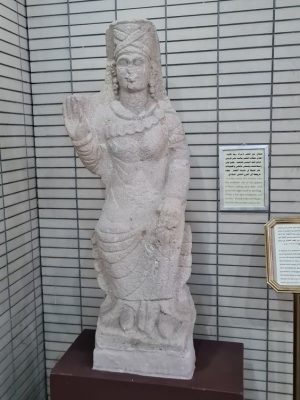
Photo ©Jona Lendering

The Iraq Museum in Baghdad
Some Problems of Romano-Parthian Sculpture at Hatra
J. M. C. Toynbee https://www.jstor.org/stable/298931



2nd-3rd century
From Safar and Mustafa, Hatra: The City of the Sun God, pl. 250, p. 256-257. https://gatesofnineveh
This is an original sculpture from the museum in Baghdad. Copy from Mosul was destroyed by ISIS
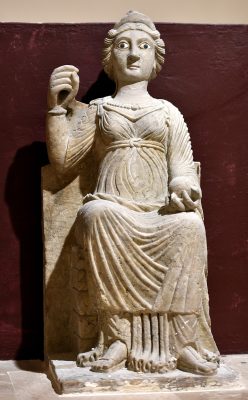
https://commons.wikimedia.org
“Martan (“Our Lady”) was the main female deity of the city. She was the companion of the celestial god Maran-Shamash and mother of Barmaren. The goddess features several iconographies on the site, but she is often depicted enthroned wearing a high cohead adorned with jewels, and is sometimes characterized by the presence of a crescent moon behind. Other deities depicted in the sculptures are: the ancient Mesopotamian deity Nanaia; the Arab goddess Allat, frequently portrayed in the form of Athena and accompanied by attribute animals such as the camel and the lion (see image); tutelary deities of classical derivation such as Tyche and Nike, which symbolically represented the protection of the city and victory; and Aphrodite.
In the HaSSP 2020 campaign, at least thirteen heads of female divinities have been identified: in some limited cases probably referable to Martan, and mostly referable to figures of Nikai and Tychai. For two of the heads analyzed, belonging to statues representing respectively Allat / Athena and a Nike, it was also possible to identify the original bust preserved in the warehouses. These statues will soon be reassembled by the restorers of the Iraq Museum in Baghdad.” https://hatrasite.com/2020/01/30/progetto-hassp-scultura-in-pillole-da-hatra-le-divinita-femminili/
Nergal and Atargatis
This tablet was destroyed in the Mosul Cultural Museum in February of 2015 https://artsandculture.google.com
Relief [a copy] with an image of the god Nergal [Nirgul].
Among the Assyrians he was the god of war and the underworld. On the right a female divinity on a throne with lionesses, perhaps to be identified with Atargatis [goddess of beauty and love, Atara’ta source / al-Hadr source].
Painted gray chalky alabaster, h: 90 cm
From the Temple I, 2nd century
Photo: https://hatrasite.com/la-vita-religiosa-di-hatra/
Mosul Museum







source >> https://rekrei.org/locations/mosul-museum/reconstructions/the-unique-nirgul-tablet




Pictures:
AP Photo/Hadi Mizban https://www.dailymail.co.uk
©Osama Amin https://commons.wikimedia.org https://commons.wikimedia.org
https://phirlo.com/iraq-museum-baghdad-a-glimpse-into-the-ancient-mesopotamia/152

Stone figures depicting the family of a king Sanatruq I, the Iraqi National Museum in Baghdad, Aug 21, 2014.
AP Photo/Hadi Mizban
https://www.dailymail.co.uk/wires/ap/article-2730995/Iraq-museum-inaugurates-2-halls-statues.html



The Iraq Museum in Baghdad
Pictures: ©ERICK BONNIER https://camnes.org/hatra-statuary-salvage-project; © Osama Amin wiki1 wiki2

a peculiar hairstyle, featuring one or three bunches made of curls, as in the case of Nasru (128-138 AD) and Sanatruq I (140-177 AD) https://hatrasite.com
The Iraq Museum in Baghdad

The Iraq Museum in Baghdad


The lintel of the Temple V “the reclining figure of the ruler of Hatra, with a smaller figure to his let, standing on a pedestal. The fact that the man is reclining next to the statue is particularly noteworthy: it shows him banqueting together with the cult image, which was exactly what happened in the small shrines in the city.” [L. Dirven, Cult Images]
The lintel “that once adorned the main entrance of the temple – shows a banquet flanked by two images of Nike or Victory. Some of the figures in the banquet scene are labelled with short inscriptions (H33). The central part of the scene is occupied by the representation of Nasru, lord of Hatra, shown in typical Hatrene dress. Nasru rests on a klinè (bed), his left arm on a pedestal or pillow. He holds a bowl in his left hand. On both sides of Nasru are two smaller male figures. One of the men is described wlgs (Vologaeses) known from the history of Hatra as the elder son of Nasru.” [Jakubiak K., A note]

Alabaster statue of a young prince dressed in Parthian style with loose trousers, long belted tunic, and carrying acanthus leaf in his left hand and the right hand raised for greeting.
National Museum of Iraq, Baghdad.
https://indroyc.com/
“Statues seen at 0:40 and 2:43 of the video. From Safar and Mustafa, Hatra: The City of the Sun God, pl. 19, pl. 199, pp. 75, 212. The sculpture on the right is a statue of a Hatrene nobleman dressed in the Parthian style. This is one of the earlier Hatrene sculptures found and dates to the 1st century AD. Its catalog number is MM14.”
<https://projectmosul.org/locations/mosul-museum/reconstructions/priest-and-nobleman>

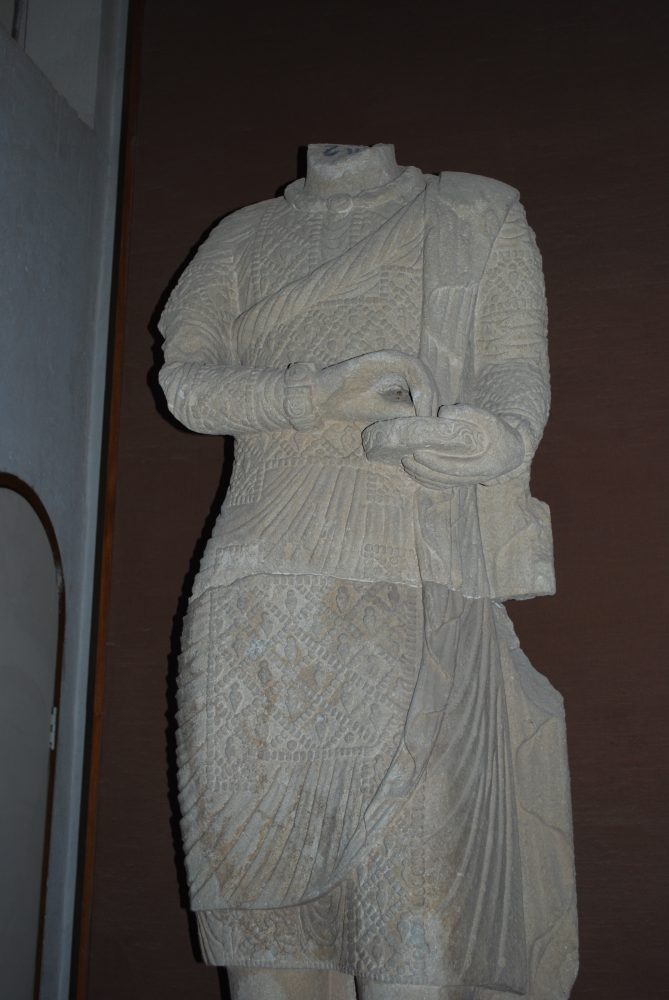






- Left: Statue of an unidentified king of Hatra. Right: Statue of King Uthal. Safar and Mustafa, Hatra: The City of the Sun God, p. 208-210.
- Photo by Diane Siebrandt, U.S. State Department, 2008.
Both sculptures from the Mosul Museum were damaged by ISIS in 2015.
Source: https://gatesofnineveh











1. Photo on the left Diane Siebrandt, U.S. State Department, 2008
2. https://projectmosul.org/locations/mosul-museum/reconstructions/statue-of-sanatruq-ii
3. https://rekrei.org/locations/mosul-museum/reconstructions/statue-of-sanatruq-ii


“Beheaded swordsman – headless statue can be seen, clutching a sword in his hands and wearing long pleated trousers and a cape. An inscription identifies it as a depiction of a certain Makai ben Nashri.[5] Statue of Makai ben Nashri seen in 3:16 of video. Left photo by Diane Siebrandt, U.S. State Department, 2008. Right photo from Safar and Mustafa, Hatra: The City of the Sun God, p. 78.” https://projectmosul.org/locations/mosul-museum/reconstructions/statue-of-makai-ben-nashri
Described: Farrokh, K., Karamian, Gh., Delfan, M., Astaraki, F. (2016). Preliminary reports of the late Parthian or early Sassanian relief at Panj-e Ali, the Parthian relief at Andika and examinations of late Parthian swords and daggers. HISTORIA I ŚWIAT, No.5, pp. 31-55. https://www.academia.edu
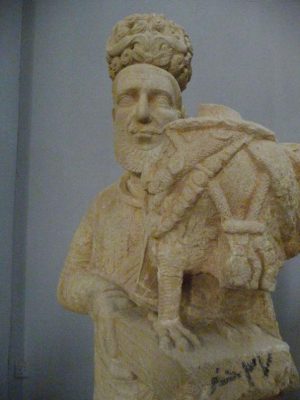


Statue of an unidentified king of Hatra holding an eagle destroyed by ISIS in 2015.
1. Photo by Col. Mary Prophit, United States Army, 2010. https://gatesofnineveh
2. After Project Mosul https://projectmosul.org/locations/mosul-museum/reconstructions/hatra-king-with-eagle
A Statue of the Chief Priest from Hatra
WATHIQ AL-SALIHI, 1991
https://www.jstor.org/stable/24048282
“The statues of priest in Hatra are numerous. They come mainly from the numerous minor temples (for example Temples 5 and 14) scattered throughout the city or from the central sacred enclosure, which contains the main temples. In the depictions the priests are generally characterized by a high pointed headdress, by a tunic that reaches the knee, leaving the lower part of the legs and bare feet uncovered, and by a cloak wrapped diagonally over the tunic. The face can be bearded or shaved, bringing back some physiognomic characteristics of the person represented. The left hand usually holds a saucer with incense and a situla, while the right hand draws from the container.” <https://hatrasite.com>
The Iraq Museum in Baghdad


©ERICK BONNIER https://www.erickbonnier-pictures.com/reports-travels/iraq-hatra/
Photo by Zaid AL-OBEIDI / AFP, taken on February 24, 2022 https://trendsmena.com

The Iraq Museum in Baghdad

“Dr. Lucinda Dirven writes that this eagle relief was discovered during excavations at the north gate of the city and was not published until 1978.”
https://gatesofnineveh

Stele of the eagle, North city gate https://hatrasite.com
The Iraq Museum in Baghdad

Relief of an eagle standing before two standards [god Shamash in a medallion.
187 CE, from the Ninth Temple at Hatra
Photo ©Osama SM Amin wiki
The Iraq Museum in Baghdad
The young god with banner, Building A, central courtyard in front of the altar, 200 AD, Height 140 cm. The Iraq Museum in Baghdad [https://hatrasite.com/larte-figurativa/]
“The banners, which probably represented the gods during the processions, also played an important role in the religious world of Hatra and on these were depicted gods or astrological symbols. Numerous apotropaic images carved on buildings may indicate the use of magical formulas, and horoscopes suggest a knowledge of astrology. We also know that the gods sometimes gave orders and instructions in dreams.” [https://hatrasite.com/la-vita-religiosa-di-hatra/]


“Within the lot of sculptures cataloged during the HaSSP 2020 campaign, male divinities are of great importance. To this group belong Maran-Shamash, god of the Sun and main deity of the pantheon of Hatra, to whom the great sacred precinct where the major temples were located was dedicated, and his son Barmaren, also an astral god, depicted in this exposed relief at the Iraq Museum in Baghdad. Together with Martan, Our Lady, they made up the most revered divine triad in Hatra.” https://hatrasite.com

From left to right: Maren [Shamash], Marten, Barmaren. From Safar and Mustafa, Hatra: The City of the Sun God, pl. 88, 89, 90, p. 113-115.
https://gatesofnineveh.wordpress.com/2015/03/03/assessing-the-damage-at-the-mosul-museum-part-2-the-sculptures-from-hatra/
Pictures below are from the Mosul Museum, reliefs on the wall https://rekrei.org

Shamash, the sun god rising from clouds or mountains.
Temenos, at the Temple of the Triad
https://hatrasite.com
Mosul Museum, Iraq

Iraq unveils restoration work at ancient city ravaged by IS
Read more: https://www.al-monitor.com/originals/2022/02/iraq-unveils-restoration-work-ancient-city-ravaged#ixzz7NPKwOtGT

Wathiq al-Salihi HATRA: THREE NOTES, HISTORICAL, ICONOGRAPHICAL, AND RELIGIOUS
Published online by Cambridge University Press: 22 October 2021 link
Wathiq I. Al-Salihi, Two Cult-Statues from Hatra https://www.jstor.org/stable/4200422


Graffiti with a zodiacal disc with Shamash and Bar Marayn in the center, double order temple with acroterion of a female figure; recumbent front character Beit Ma’nu. Diameter of the zodiac 20 cm https://hatrasite.com/larte-figurativa/

“In building A [the middle of the 2nd – the middle of the 3rd century], an entire room was decorated with depictions of wild boar and gazelle hunting scenes. In the hunt on horseback against the wild boar, the large scene is made only in red outline with great happiness and certainty of the stroke. The rider in a flying gallop strikes a boar with a long spear; beneath the wounded animal, the same animal, now dead, is probably depicted in a symbolic-narrative sequence according to a convention that will be common in the Sassanid period.” https://hatrasite.com/larte-figurativa/
For the Building A description see >> https://hatrasite.com/ledificio-a/ “rich and large house which, according to the inscriptions found, seems to have belonged to the steward of the Temple of the god Shahiru.”

(Berlin, Museum fur Islamische Kunst) https://hatrasite.com/la-vita-religiosa-di-hatra/

Statuette of Victory Al-at (incomplete) in chalky alabaster, provenance: Building A, central courtyard in front of the altar, height: 18 cm
https://hatrasite.com/gli-oggetti-delledificio-a/

